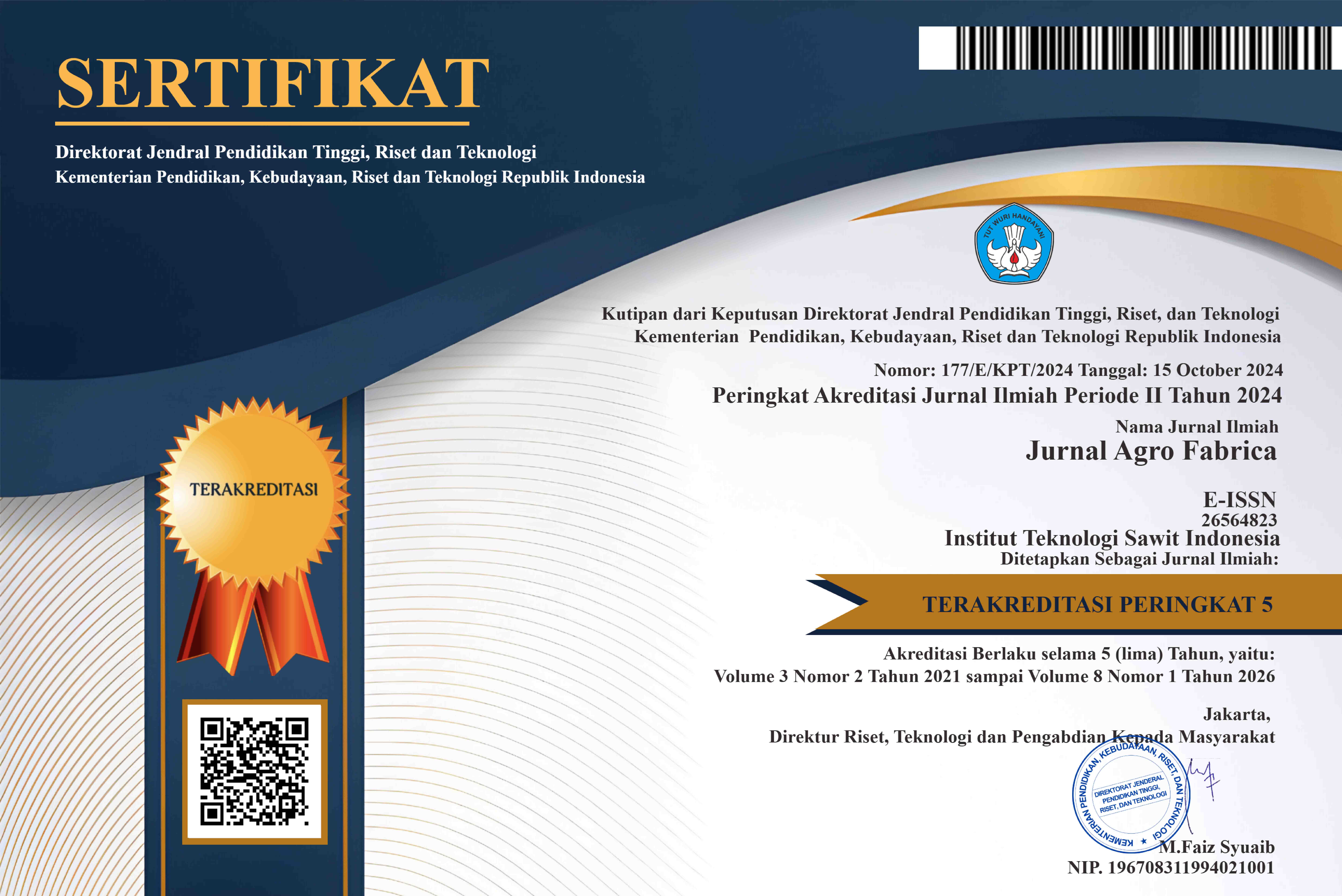KAJIAN PERBEDAAN METODE APLIKASI ETEPHON 60% TERHADAP EFISIENSI PEMBRONDOLAN SERTA NILAI DOBI, BETA KAROTEN DAN VITAMIN E PADA TANDAN BUAH SEGAR KELAPA SAWIT
DOI:
https://doi.org/10.47199/jaf.v4i2.110Keywords:
Semi Virgin Crude Palm Oil, Etephon, Deterioration of Bleachability Index, Carotene, Vitamin EAbstract
Semi Virgin Crude Palm Oil (SVCPO) is a palm oil product that is processed from palm oil FFB raw materials which are treated using chemicals in the form of 60% etephon. The FFB is processed with simple tools and a short process, as well as minimum treatment with a modified temperature. This study aims to speed up the harvesting time of palm fruit from the bunch by using the application method and 12 hours of curing time to produce good quality oil. This research was conducted at STIPAP, precisely at the TPHP Process Laboratory. The time of this research was carried out from January to July 2021. This study used the Completely Block Design (CBD) method, by administering chemicals to the FFB raw material by injection and spray methods. The results of this study showed that the FFB removal efficiency ranged from 6.61- 11.44% and SVCPO had DOBI values ranging from 1.66-2.57 ppm, carotene ranged from 311- 1044 ppm, and vitamin E ranged from 409-897. ppm. The application of injection and spray affects the efficiency of sloughing off and the quality of the oil. It can be concluded that in this study the best method for slashing efficiency was the spray method and the injection method for DOBI, carotene, and vitamin E values.
Downloads
Downloads
Published
How to Cite
Issue
Section
License
Copyright (c) 2023 Jurnal Agro Fabrica

This work is licensed under a Creative Commons Attribution 4.0 International License.




















